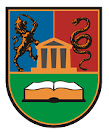Please use this identifier to cite or link to this item:
https://scidar.kg.ac.rs/handle/123456789/22493| Title: | IMPLEMENTATION OF A NOVEL BIOCLIMATIC-PASSIVE ARCHITECTURE CONCEPT IN SERBIAN AND POLISH RESIDENTIAL BUILDING SECTORS |
| Authors: | Nešović, Aleksandar     Kowalik, Robert  |
| Journal: | Buildings |
| Issue Date: | 2025 |
| Abstract: | This paper presents a novel integration of bioclimatic-passive architectural elements—Trombe walls, pergolas, and deciduous climbers—in the context of residential buildings in Eastern and Central Europe, a combination that remains largely underexplored in the current literature. The innovativeness of the proposed concept is reflected in the combined use of the following building elements: three types of passive Trombe wall (single-glazed, double-glazed, and triple-glazed), pergolas, and four types of deciduous climbers (V. coignetiae, H. lupulus, W. sinensis, and A. macrophylla). By using meteorological data for the towns Kragujevac and Kielce, the influence of location parameters for two dominant European climate zones (moderate continental and continental) is also included in this investigation. The initial single-family building models were created following the Serbian and Polish rulebooks on energy efficiency for new buildings and equipped with the same thermo-technical systems and people occupancy conditions. Based on the conducted simulations (using Google SketchUp 8 and EnergyPlus 7.1) and obtained results on the annual level, the following main conclusions can be drawn: (1) a moderate continental climate is more suitable for implementing the proposed concept; (2) a single-glazed passive Trombe wall is not energy or environmentally justified; (3) the energy, environmental, and economic benefits for both selected locations are greatest in the case of the combined use of pergolas, V. coignetiae, and triple-glazed passive Trombe wall; and (4) before the wider commercial application of the proposed concept in the future, efforts should be made to explore economic opportunities, which, among other things, involve a focus on market stability and accessibility. |
| URI: | https://scidar.kg.ac.rs/handle/123456789/22493 |
| Type: | article |
| DOI: | 10.3390/buildings15162877 |
| ISSN: | 2075-5309 |
| Appears in Collections: | Institute for Information Technologies, Kragujevac |
This item is licensed under a Creative Commons License



